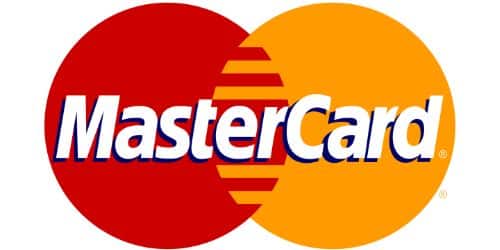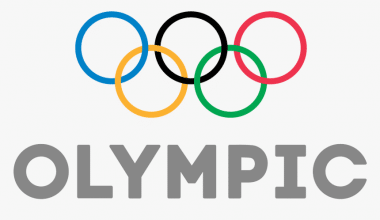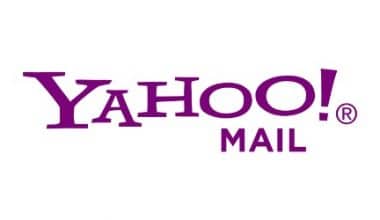Mastercard is one of the most famous brands in the world. It has been around for decades and has become one of the most popular forms of payment. This article will tell you all about Mastercard, from its history and how it was founded to what its logo means today.
Who is Mastercard owned by?
Mastercard is owned by Mastercard International Incorporated, which itself is a subsidiary of Mastercard Worldwide and is ultimately owned by MasterCard Incorporated.
What was Mastercard Originally Called?
Before you were born, there was a time when you weren’t quite sure what ‘money’ was. If you had a dollar in your pocket, that wasn’t necessarily money yet—it was just some paper with words on it; but if someone handed you a BankAmericard card, that would have been real money.
In the early 1960s, BankAmericard (later renamed MasterCard) started offering credit cards as an alternative for consumers who didn’t want to carry cash around with them all day. The idea behind this new service was simple: make sure people have access to their money whenever they need it through conventional methods such as debit cards or mobile payments like Apple Pay or Google Pay. It seemed like such an obvious idea at the time: why didn’t banks do this before? Well…
Mastercard History
Mastercard was founded in 1966 and is now the second-largest payment processor in the world. It’s also known for innovating, launching several products and services over the years.
How Did Mastercard Get Its Name?
MasterCard is the name of a credit card. The founder of the company, John W. Howard, was originally called “Master” because he had been taught to pay more attention to his finances than others in his family. He wanted to create something that would help people better manage their money and protect them from fraudsters, so he called his company “MasterCard,” which means “The Money Making Story.”
When Did the First Mastercard Come Out?
The first Mastercard came out in 1966. It was a credit card that allowed customers to make purchases with their money, just like any other credit card today. However, this one was different from the ones we have today because it didn’t have an expiration date or any other features that would make your information easier to track down if someone stole your identity.
The second Mastercard came out in 1969 and had all of those features! It even had an expiration date on it—and more importantly for you as a consumer: It could be used anywhere around the world without being charged extra fees for international transactions (which were often quite pricey).
How Long has Mastercard Been Around?
Mastercard was founded in 1966 as Interbank Card Association (ICA). In 1979, ICA changed its name to MasterCard International Inc., but it didn’t enter the financial services market until 1982. That same year, it introduced its first credit card—a product that would become a vital part of our daily lives. Since then, MasterCard has grown into one of the most well-known brands in business today, with over 2 billion cards in circulation worldwide.
Why do all Mastercards start with 5?
The reason for this is simple. MasterCard was originally called Master Charge, an acronym for “Master Card.” The first cards used this system and started with the number 5.
To pay with your card, you need only hold it up to the scanner.
What credit card starts with 5524?
The 5524 credit card is a Mastercard credit card, meaning it’s one of the most popular cards in the world.
Mastercard is a global payment system that enables consumers, retailers, and businesses to make secure digital payments.
What Type of Credit Card Starts with 4388?
You may have heard of Mastercard, but you might not know it is a credit card company. The most common type of Mastercard is the standard credit card with a magnetic strip on the back, which can be used anywhere in the world to make purchases. If you want to use your card while traveling abroad or just at home in your own country (if there aren’t any foreign exchange fees), this card would be perfect for you.
The next type of Mastercard is called an international transaction Service (ITS). It has all the same features as its counterpart but also offers extra protection against fraud and theft when traveling abroad. If someone steals your ITS-enabled device, they won’t be able to make any charges against it without first getting authorization from their bank’s security department. This means that if someone tries stealing from you using this type of device, then they will get caught red-handed by authorities before being able to do anything evil with stolen goods or money.
How Do I Identify a MasterCard?
To identify a MasterCard, look for the MasterCard logo. The logo will appear on your credit card, even if you use an ATM or point-of-sale terminal.
If you see this symbol:
Look at the left side of your credit card — there should be a large “M” and three smaller letters (LH). These letters stand for MasterCard International Incorporated in Ireland and Luxembourg.
How Do I know If it’s Visa or MasterCard?
The first thing to do is look at the logo. If you’re looking at a Visa card with a blue background, it’s probably not MasterCard. The logo on a Visa card will have four circles; this makes them easy to identify as Visa cards and not MasterCard logos. On the other hand, if you see red text with an image of two circles inside each other (like so:), then that could mean that either MasterCard or Discover issued your credit card—but probably not both! For this method to work correctly, though, there needs to be some differentiation between how long each circle should be (Visa: 2mm; MasterCard/Discover: 3mm) as well as where exactly those circles go within their respective logos (Visa: Left side; Master Card/Discover: Right side).
Visa Mastercard Logo
The Mastercard logo is a circle with a line through it. The background color is red, yellow, blue, and green. Purple is also used sometimes to represent the color purple in the logo but not always (see below).
The background colors of your credit card logo can be changed to any other color you want! This can be achieved by using different shades of each color or by mixing them in different ways – for example, if you wanted to use navy blue instead of white as your primary shade, then all you would have to do is add some black ink onto your card design.
What is the Use of Mastercard?
Mastercard is the world’s most widely accepted credit card, with more than 210 countries and territories worldwide accepting its use. It is so popular that it’s often used as a payment method for online transactions.
Mastercard is a payment card that allows customers to make purchases using their funds on the spot at any place that accepts Mastercard. The card can only be used for purchases, not as a credit card.
A Mastercard is a type of credit card that allows users to purchase goods and services using their funds rather than borrowing money from an issuing bank.
The card can be used for purchases anywhere that accept Mastercard. It can only be used for purchases and not as a credit card.
The 1964 story of the First Master Charge card
In the 1960s, Master Charge was a credit card created by Bank of America. The company’s first MasterCard was innovative because it was the first to offer multiple merchants and retailers to accept its cards. It allowed customers to use their money at any store or restaurant that accepted Visa or MasterCard—and from there, they could spend it anywhere else they wanted.
This feature made it easy for consumers to spend more money on things they had already purchased at other stores: If you bought something from one merchant with your Master Charge Card, you could use your card again at another place later on in your trip (or even come back home).
Master Charge was the first credit card to offer its customers a rewards program. It was also one of the first companies to offer “no interest for six months” on purchases made with their cards. They could do this because they owned so many banks and other financial institutions around the country—and by doing so, they could give their customers more credit than any other company at the time.
The Rise of the Mastercard brand
Mastercard is a global brand that has been around since 1958. It’s also a payment processing company, credit card issuer, and debit card issuer. Mastercard also has an ATM network operator and a transaction processor for small businesses.
The company was founded by Alex Roginski and others who wanted to create an alternative to the money transfer services offered by Western Union at the time. The plan was simple.
Instead of sending paper checks through the mail or over the phone (which were slow), they would create something faster and more efficient with modern technology like computers.
The first Mastercard was issued in 1966. It was a plastic card that could be used anywhere that accepted Mastercard as a form of payment. The company also began issuing credit and debit cards with the same logo.
Is There a Meaning Behind the Colors of a Mastercard Logo?
The colors you see in the Mastercard logo are blue and red. These two hues represent trust, security, and stability and evoke passion, energy, and action. The duality of these three things—trustworthiness, on the one hand, financial strength, on another, and an energetic drive toward progress—is what makes up the brand identity of Mastercard as a whole.
The Mastercard logo is an excellent example of how color can be used to represent the brand’s values. While it may not seem like much at first glance, this simple combination of colors conveys so much about the company’s identity and what it stands for that you might even say it’s priceless.
Why are there Two Circles in the Mastercard Logo?
The two circles in the logo represent the two parties of a transaction. They also symbolize infinity and the global nature of Mastercard since it’s been around for over 60 years and has spread across many countries.
The blue and yellow colors are also used in many other Mastercard logos worldwide. The yellow is a nod to the company’s origins as a bank for travelers because it’s been used for centuries on signs for inns and hostels.
The purple color nods to Mastercard’s origins as a bank for travelers. It’s been used for centuries on signs for inns and hostels.
Why Does It Have an Interlocking O and Two Cs?
The Mastercard logo has an interlocking O and two Cs. The O stands for “Otto Bock,” the founder of MasterCard. The two Cs represent money and business, which are important to MasterCard.
The Mastercard logo is a stylized O with two Cs inside. The Cs are the same color as the background, while the O is white. This creates an impression of depth and dimensionality.
What is Mastercard Type?
Mastercard is a credit card, payment card, and debit card. It’s also known as an electronic wallet or smart cash.
It’s important to note that MasterCard isn’t just one thing; it has multiple functions depending on your card type. For example: If you have a regular-sized Mastercard (the kind most people think of when they hear the word “MasterCard”), it can be used at any store that accepts Visa® cards or American Express® cards—but only if you’re paying with cash! You can also use this card to pay for products in stores like Walgreens, Rite Aid, and CVS Pharmacy—but not Target!
If you have a small Mastercard that’s metal, it can be used at any store that accepts Visa® cards or American Express® cards—but only if you’re paying with cash! You can also use this card to pay for products in stores like Walgreens, Rite Aid, and CVS Pharmacy—but not Target.
What Does the MasterCard Logo Symbolize?
The MasterCard logo is a circle with two interlocking rings. The world and its people are represented by the different circles, while their union of them can be seen in the single line connecting them all.
The first circle represents all that exists: you, me, and every other person on Earth. It also represents what makes up your life — who you are and where your journey will take you if left unchecked or unguided by others’ opinions or beliefs.
The second circle represents us as individuals who live within this world (which includes physical objects such as cars or houses and abstract concepts such as love). For example: if I were to draw two lines from each endpoint down and then connect those points with another line coming out from one endpoint and going towards another point in between, we would have our original starting point again.
Who Made the MasterCard Logo?
The Interbrand Group designed the MasterCard logo in 1992. This agency is based in New York Citananhahas been around since 1982.
The MasterCard logo is a classic example of how a single designer can create something that seems to have been done before but isn’t new! The idea behind this design was simple: they wanted people to see their name easily when they saw someone using it on their card or wallet. They also wanted it to look like an image you might find on paper (like what I did with my old debit card).
What Is Mastercard in Simple Words?
What does it bring to mind when you hear the word “Mastercard”?
If you are like most people, there is a good chance that you will think of a credit card. A credit card is an identity-based financial instrument used to make payments in exchange for goods and services. It works like this: If I give my name and address to a company, they will issue me a credit card that can be used at any merchant who accepts Visa or MasterCard as payment. The merchant charges me for their services, which takes away from my earnings until I pay off my balance in regular installments (or if I choose not to do so).
Who is the CEO of Mastercard in India?
The CEO of Mastercard in India is Ajay Banga. He is the president and chief executive officer of MasterCard Worldwide, as well as the chairman and CEO of Mastercard International. He has served as a member of its board since 1998 and has been with it for more than 25 years.
In addition to being an expert in financial management, he also has experience working with other companies like PepsiCo Inc., Kraft Foods Group Inc., and eBay Inc.
When did Mastercard Begin?
Mastercard was founded in 1966 and was originally called BankAmericard. In its early days, Mastercard was a small company with only two employees: Harvey L. Schlee, who ran the company’s business development department, and Carl McAfee Jr., who ran marketing and advertising for the first few years.
Both men have big personalities that you can see in their names – Schlee came up with “Mastercard” because he liked playing cards as a child. At the same time, McAfee eventually moved on from running the company (he left in 1971), and his name lives on through one of its most famous products: Prepaid Visa cards.
Mastercard Founder
MasterCard was founded in 1966, and it is a credit card company that is one of the biggest credit card companies in the world. The company has many benefits for its customers, such as:
- It helps you save money on your purchases.
- You can use your card anywhere without worrying about foreign transaction fees or currency exchange rates when you make purchases abroad.
- They offer rewards programs such as cashback rewards, frequent flyer miles, and other perks that can be used towards future travel expenses or other purchases made with their cards (like buying gas).
What are the Benefits of a Mastercard?
Mastercard is one of the most popular credit cards in the world, with more than 200 million users.
It’s accepted worldwide and safe and secure.
The rewards you earn with this card are worth it—the points can be used toward travel expenses, gift cards, or even cash back! You can also use your rewards on Amazon Prime subscriptions for free shipping on many items each month.
If you’re looking for extra perks like travel discounts or points just for signing up with a new bank account (like Chase), this is worth checking out if you don’t already have one.
Which is better: a Visa or a Mastercard?
Visa and Mastercard are two of the most popular credit cards. Each has its advantages, so it is important to consider your needs before deciding which one you want to use.
Visa is a good choice if you travel a lot because it offers bonus points when spending at certain stores or restaurants (like Macy’s, Starbucks, and Whole Foods). The downside of using this card is that there are no foreign transaction fees on purchases made outside the United States (some other cards charge extra fees).
Mastercard offers more rewards than Visa, but they tend to be more limited in scope compared with Visa’s ability to earn rewards anywhere around the world without any additional cost associated with using them abroad as long as there isn’t another currency involved in making purchases overseas.
Which Mastercard has the Best Benefits?
Mastercard is a credit card that’s widely used in the United States. It was founded by a group of people who saw the need for a better way to pay for things. They developed an innovative ” authentication ” system that allowed merchants and consumers to use one card rather than having separate accounts.
Visa (which is also owned by Mastercard) offers many benefits as well, including:
- Signature cards offer access to exclusive services such as concierge services, airport lounge membership, and travel insurance.
- Visa Delta cards have no annual fee but charge 1% on all purchases instead of 3% like its other cards. This means that you’ll pay less interest on your balance over time if you hold this kind of card instead of something else like an American Express Gold Card, which charges 2% APY (annual percentage yield).
Summary
We hope that you now understand how Mastercard came to be and what it stands for. If you’re new to the credit card industry, then this article is your first step toward learning more about this major player in the world of banking.
Related Articles
- How Does Paypal Work? Pros, Cons & All You Need!!!
- How To Add Money To Venmo: Best Easy Guide (Updated)
- Gemini Review 2022: Is Gemini Safe & Legit? (Detailed Guide)
- Check Card: How to Check Card Visa, American Express, Stimulus (+ free tips)
- BUSINESS COLLABORATION: Types, Benefits, and Examples (+Free & Paid Software Options)






